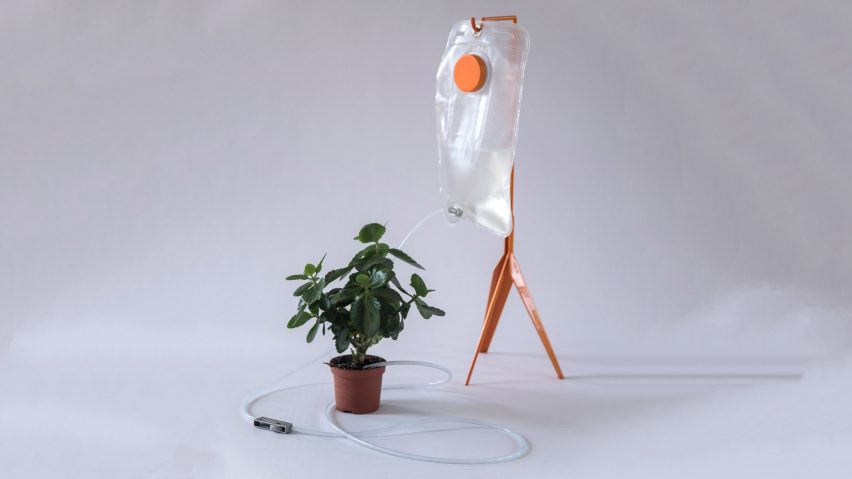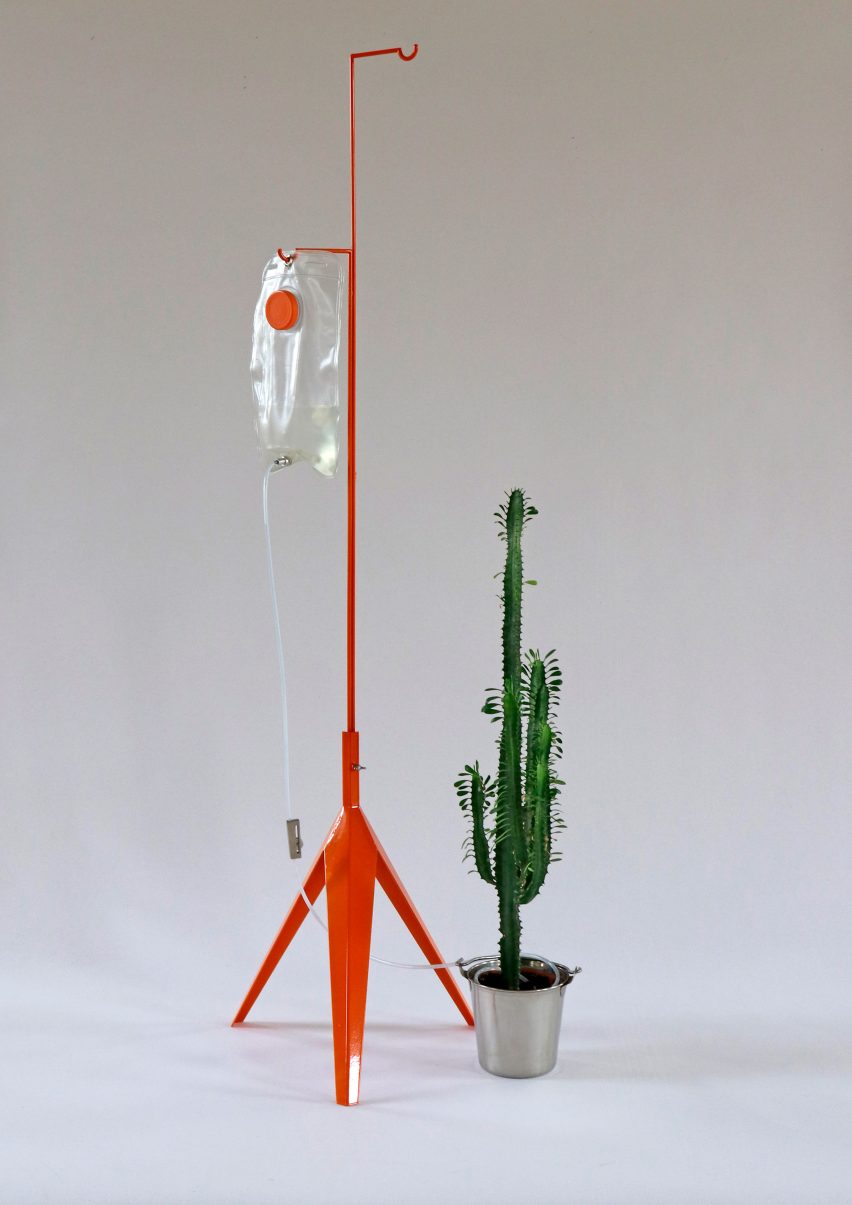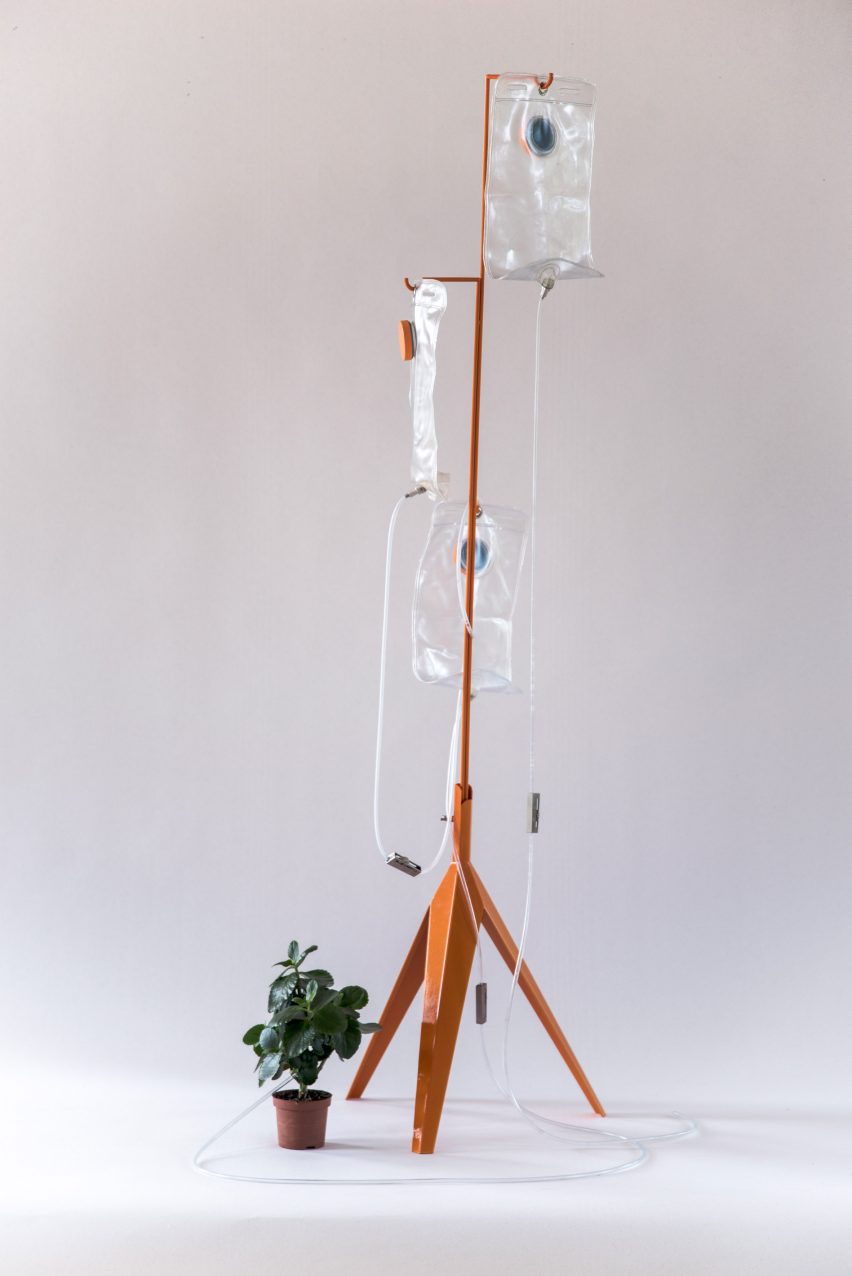
Keita Augstkalne's intravenous drip brings neglected houseplants back to life
Riga Design and Art School graduate Keita Augstkalne has developed an indoor watering system to revive plants that have been neglected by their busy owners.
Previewed at London Design Fair, the system resembles a hospital intravenous (IV) stand, which are commonly used to distribute fluids into the human body.
Augstkalne, who studied product design at Riga Design and Art School, created the system to prevent plants from withering away when left unattended.

"Our modern lives are very busy and houseplants are often left neglected and forgotten. As I am frequently not at home for long periods of time, and my family keeps forgetting requests to water my plants, my absence leads to their deaths," said Augstkalne.
"Increasingly, people are debating the importance of maintaining nature globally, but we forget about the nature that is at our fingertips: our houseplants."
The product features a stainless steel stand in bright orange, three two-litre water reservoirs and a pipe that feeds water directly into the soil.
The pipe has an inbuilt flow regulator that ensures the plant remains in a healthy condition for up to 10 days. The water flow rate can also be adjusted using a metal adjustor attached to the pipe depending on each plant's requirements.

Augstkalne worked with a Riga-based laser cutting company who created all the individual components of the stand. She then assembled the structure using an electric arc welder, before sanding the surface and applying heated powder paint to achieve the stand's vivid shade of orange.
The water reservoir, which is made from PVC, is suspended from the stand and the pipe is fastened via a small nozzle at the bottom of the bag.
Other projects from the design fair, part of London Design Festival, include a series of furniture that expands and contracts according to a user's needs, and an ergonomic cushion in the shape of a headless torso to provide physical and emotional support for lonely millennials.